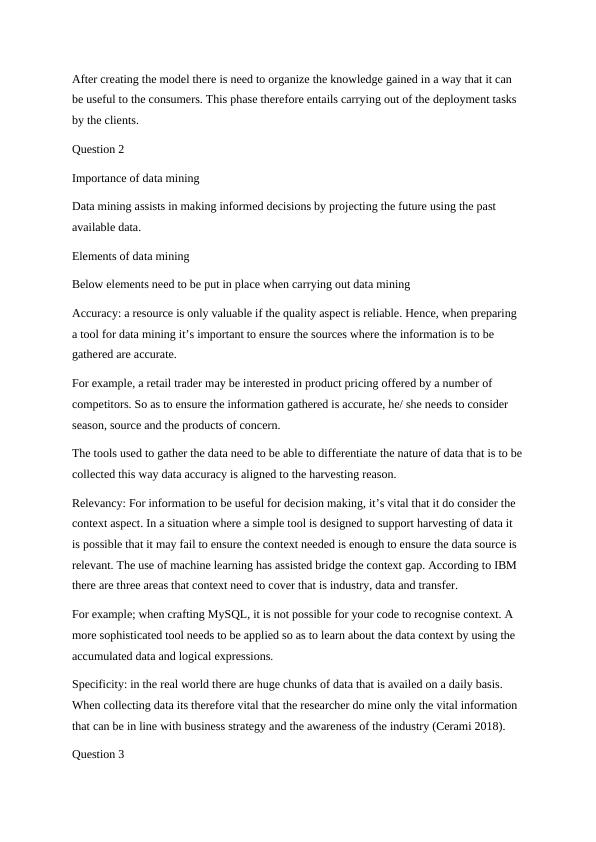Data Mining: Definition, Importance, and Problems
9 Pages1578 Words474 Views
Added on 2023-04-21
About This Document
This article provides an overview of data mining, including its definition, importance, and problems. It explains how data mining helps in making informed decisions and discusses the elements that need to be considered. The article also explores the challenges faced in data mining, such as poor quality data and confidentiality concerns. Additionally, it highlights the role of a data dictionary in understanding the nature of data and provides insights into the most popular authors and their books based on the number of weeks on the bestseller list.
Data Mining: Definition, Importance, and Problems
Added on 2023-04-21
ShareRelated Documents
End of preview
Want to access all the pages? Upload your documents or become a member.
Business Information Systems .
|36
|6730
|179
Business Information Systems
|9
|1736
|235
ISY310 - Business Analysis | Data mining
|10
|2653
|283
Data Mining: A Solution for Business Problems
|7
|1117
|413
Data Mining - Definition, Stages, Advantages and Drawbacks
|7
|1250
|290
B9DA103 Data Mining - CRISP-DM model
|6
|1587
|14



